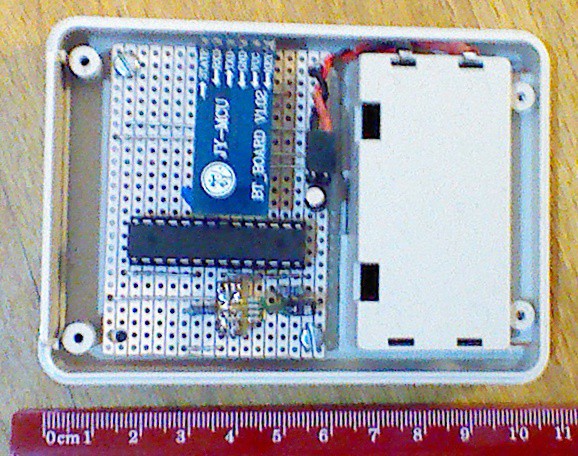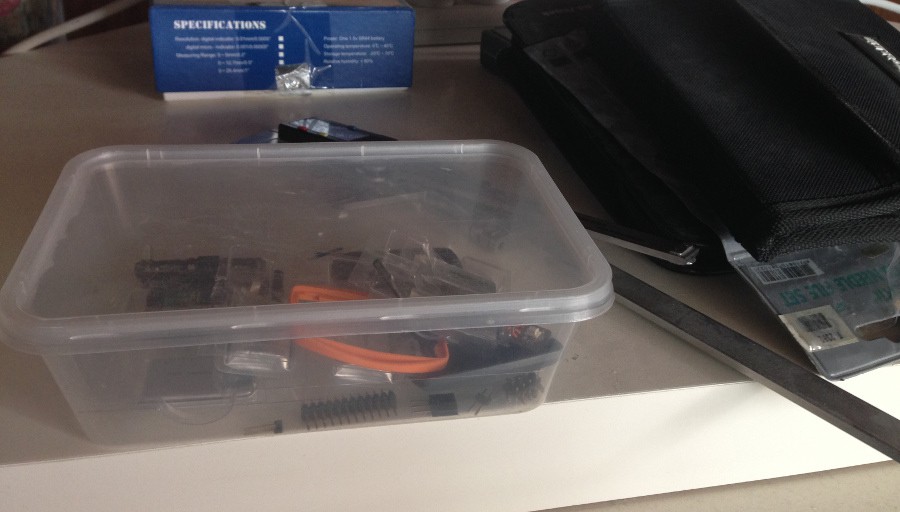This project has actually been quietly sitting on the back burner for quite a while - the majority of work was done in 2013 as part of my undergrad EE final year project. It began even before that though, in early January that year.
The idea itself was put forward to me by my Dad, a Type 1 diabetic himself, as a possible way to mitigate the ever constant risk of hypoglycaemia in the early morning while asleep. A quick and (extremely) rough prototype followed - pictured below, little more than an SHT72 humidity/temperature sensor, a generic serial to Bluetooth adapter, an ATmega8 and a 5V linear regulator all crammed onto some stripboard.

The Android app developed to communicate with it was similarly thrown together, and though the sensor prototype itself was hardly small enough to be convenient when sleeping, we did get some good data. Humidity and temperature measurements themselves proved to be a problem - readings from the SHT72 I was using could sometimes be horribly unreliable, a problem I never did get to solve. Between that and the increasing workload as I started the final year of my undergrad EE course, progress on the project faded.
The more interesting parts of the current system came about after I picked it as the subject of my final year project several months later. Focus went largely on designing and producing a more convenient, reliable, and portable sensor device. Learning to use KiCad was a pretty steep learning curve, but was definitely worth it. Boards were ordered from OSH Park, and turned out great, though I did have some trouble getting the reflow process right (using a $25 toaster oven from Kmart). The STMicro Bluetooth module used on the current board (the SPBT2632C2A) was actually really hard to get hold of - even though it was advertised on various US electronics suppliers such as Digi-Key and Mouser, and even Element 14, everyone seemed convinced I was going to make missiles or something with it. Indeed, I was eventually able to get them from Future Electronics in Canada, but only after I signed a declaration saying I wasn't going to do anything malicious with them.
Frantically trying to get everything built and working, along with writing my thesis, before the submission deadline meant that the system in it's current state never actually got tested or used much, and the whole project fell by the wayside after submission as uni wrapped up.
What's Next
Having such a potentially useful system just sitting in an old Chinese takeaway container on a shelf is a bit sad. It's something I've wanted to get back into for a while, but never quite pulled together the time and effort (a pathetic excuse, I know). The Hackaday Prize has provided just enough kick to get me to do something about it - I think it's a really good chance to share it with other people and get some wider input and opinions on the project, which is really what it needs at the moment.
The current plan forward from here is to design and build another hardware iteration, cleaning up a few of the issues the old one had, such as the enclosure shape, hard to find Bluetooth chip, power usage, battery connectors, and lack of indicator light and power switch (seriously, I have no idea how I missed that...). The Android application itself also needs an update, it currently has some timing issues when synchronising with the sensor device, and I'd like to have a look at the newer Bluetooth API that recent versions of Android have introduced (the old one is, put simply, broken and horrible).
For those interested in the design of the current system and how it works, the next few project logs will break down the different aspects of the system and how they were designed. Feedback, especially suggestions, are welcome in the comments.
 novirium
novirium
Discussions
Become a Hackaday.io Member
Create an account to leave a comment. Already have an account? Log In.